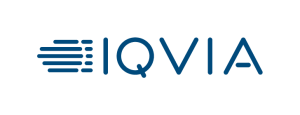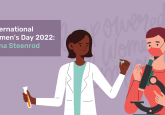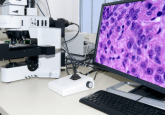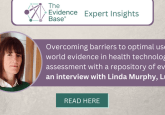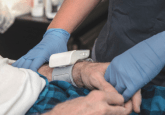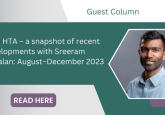RWE in Pharma: 5 minutes with…Chirag Ghai
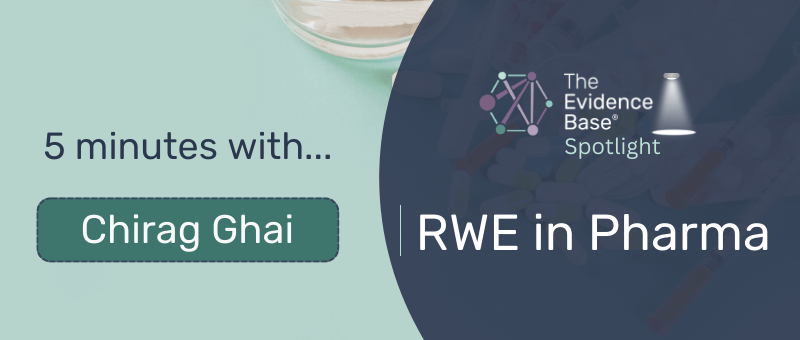
In this ‘RWE in Pharma’ interview series, we are putting various pharma experts in the spotlight and asking them to share their insight on how their industry has traditionally employed real-world evidence (RWE), how they envision this changing over the next few years and what their predictions of the impacts of the highly anticipated US FDA RWE Framework may be.
This instalment features Chirag Ghai, Practice Lead of the Real-World Evidence Solutions team at IQVIA (NC, USA).
 Please could you introduce yourself, your organization(s) and tell us more about your role?
Please could you introduce yourself, your organization(s) and tell us more about your role?
Glad to have you here reading my Q&A today! I joined IQVIA (NC, USA) in 2013 and currently serve as Practice Lead of the Real World Evidence (RWE) Solutions team. In my role, I lead the development of RWE strategy and integrated evidence generation plans to maximize product value, from molecule to market, in large and emerging biopharma organizations.
Previously, I spent a decade with the management consultancies Booz Allen Hamilton (VA, USA) and Deloitte Consulting (London, UK) where I helped address the senior agenda for a variety of stakeholders in the healthcare industry, including biopharma, payers and providers. I earned an MBA with concentrations in healthcare strategy and finance from Case Western Reserve University (OH, USA) and a BA (Honors) in Economics from Delhi University (New Delhi, India).
I consider myself fortunate to be working on the leading edge of healthcare, having been part of the team that structured one of the pioneering RWE collaborations between a top 10 biopharma and the advanced analytics arm of a leading US payer organization approximately 15 years ago. Hailing originally from New Delhi in India, I am struck by how national digitization initiatives have brought India together as a nation. I look forward to seeing this expand into healthcare, more specifically RWE, just as it has in the USA and other parts of the globe.
 What are the main ways real-world data (RWD) and RWE have traditionally been – and are currently – used by pharma?
What are the main ways real-world data (RWD) and RWE have traditionally been – and are currently – used by pharma?
Traditionally, large biopharma companies have utilized both RWD and the evidence it generates for comparative effectiveness research, alongside furthering the value-differentiating story for their products. This typically has been accomplished by strictly using structured secondary real-world databases such as claims and prescription data sources.
As we think about what qualifies as RWD, it has pretty much existed ever since data outside of clinical trials has become available. Approximately 15 years ago, the industry came to the realization that we have to do a better job of understanding what patient outcomes look like in the real world and enable physicians to make clinical decisions from insights other than randomized controlled trials. This realization, as well as higher quality data and improved access, placed the need to really harness this data top of mind.
Historically, we have lived in a world where biopharma companies need to continue to build trust and play catch-up with one of the key stakeholders: payers. A driver behind RWD/E is the impetus to generate outcomes in a bigger and more representative population, which aligns with payer objectives.
When it comes to current use of RWD/E, it continues to shift and evolve. Most recently, it has included broadening evidence to categories outside of effectiveness and safety to outcomes in health-related quality of life, cost of healthcare resources and outcomes across different patient cohorts.
The core difference between traditional and current use is the expansion beyond value differentiation and the regular inclusion of various other evidence domains.
 Do you think trust in RWE is increasing? What steps need to be taken to build this?
Do you think trust in RWE is increasing? What steps need to be taken to build this?
Trust in RWE absolutely continues to increase. We have a part to play to keep this trust and continue its growth across all stakeholders. There’s no better proof of this growing trust than regulatory agencies around the globe issuing proactive guidance on differentiation of RWE and what comprises high-quality RWD.
In terms of building on the current foundation as an industry, we first need to address missing data – especially in commercially available data sets – and ensure appropriate standardization. Second, there’s the need to continue to invest in efforts to build the longitudinal patient journey with a variety of RWD sources that capture longer time periods. The third step revolves around the recognition that a one-size-fits-all approach does not work. Flexibility to generate outcomes in specific populations, such as the payer population, is needed. As well as this, there is a need to acknowledge that in certain scenarios, such as rare disease, the use of external comparators leveraging RWD can assist in bringing products to market sooner.
 How can we build trust in RWE for stakeholders?
How can we build trust in RWE for stakeholders?
How we continue to build trust with the various stakeholders varies.
Patients are first and foremost. To build trust with patients, we need to provide them with confidence and a sense of ownership of their data. It also includes educating them on the democratization of their own data and how it can further optionality for them through better products for better outcomes. Continuing to improve convenience and empower patients with digital tools remains critical. Individuals should have the ability to connect their insights, outcomes and their decision making via digital pathways to the physician. Especially in this remote landscape, where sites are burdened and trials are expensive, we need to tap into these options that put the patient front and center.
When it comes to building trust with physicians, we need to first inform and educate on the basic science of how the product works. The second part involves treating physicians with empathy and understanding to elicit change in their behaviors and decision making. Some of this can be accomplished by sharing both proven RWE in tandem with real-world insights to sharpen clinical decisions, while providing tools to allow joint decision making with the patient.
In a world where payers are increasingly conscientious of per-member costs, payers demand insights on outcomes specific to the payer population and the need to be representative. In the industry, we should think of establishing version 2.0 of these payer and biopharma relationships, where the pharmaceutical industry can implement a new contract of trust by using RWD to develop the next generation of value-based agreements, especially for rare diseases.
As for building trust with hospitals, as an industry we should aid them in harnessing and structuring their electronic medical record data. This will allow documentation and inclusion of data at the highest possible level of clinical granularity. Using technology, such as natural language processing (NLP), to unleash the value of clinical data from both structured and unstructured data sets is paramount.
 How do you see pharma’s use of RWD/E changing over the next 5 years?
How do you see pharma’s use of RWD/E changing over the next 5 years?
Tremendous opportunities will unfold over the next 5 years. Here are a few.
First, we will experience an increased use of genetic data linked to phenotypical data. It will be done in a way that eliminates any privacy concerns with the patient’s genomic data.
Next, we will have clear cut and very well-defined guidelines when it comes to RWD/E, especially from a regulator perspective, as defining regulatory grade data – especially around approvals and label expansions – will become critical.
Third, the RWE will increasingly be used in even more meaningful ways to ensure optimal clinical trial design. This includes representation of underserved populations, efficient and more cost-effective ways to identify patients for trials and increased openness to use next-generation techniques such as direct-to-patient and site-less trials.
 How do you think the COVID-19 pandemic has affected this trajectory and view of the value and usability of RWE/RWD?
How do you think the COVID-19 pandemic has affected this trajectory and view of the value and usability of RWE/RWD?
Hands down, it has accelerated it in two very direct ways.
One way is that certain RWD sources, such as direct-to-patient sites or site networks where one would directly interact with a site for chart or network studies, have been stretched thin due to the strain COVID-19 has placed on healthcare, so we’ve seen challenges to use such sites for data. On the flip side, this challenge has encouraged the continued use of secondary data sets for RWD studies so as to not interrupt physicians treating patients on-site.
Second, COVID-19 has encouraged the development of several COVID-19 registries for RWD prospective data capture. This is not only to fuel vaccine development, but also help with monitoring the long-term effects and understanding outcomes in an area we know little about. The COVID Active Research Experience (CARE) is one such example. Such registries can sharpen future study concepts for COVID-19, or other viruses and diseases, and identify underserved areas where evidence has not been generated.
 What global implications do you think the US FDA RWE Framework – due to be published later this year – will have on pharma’s use of RWE?
What global implications do you think the US FDA RWE Framework – due to be published later this year – will have on pharma’s use of RWE?
Later this year, I expect the industry will receive further clarity and assistance with acceptance of RWE in rare diseases driven by ethical reasons. It will clarify what types of data sources to use for label expansions. Additionally, for certain types of studies, guidelines should highlight that the relevant endpoints and surrogate endpoints are acceptable for regulatory grade evidence.
The current US FDA RWE Framework has often influenced and set precedents for what non-US countries have done with RWD/E. I suspect that the upcoming changes will continue to enhance growth and opportunities for RWE globally.
On this topic, I’d also encourage readers to keep up to date with the RWE Alliance, a coalition of RWD and analytics organizations with a common interest in harnessing the power of RWE to inform regulatory decision making to improve patients’ lives. IQVIA is proud to be a founding member.
Disclaimers:
Chirag Ghai has no disclaimers to declare.
The opinions expressed in this feature are those of the interviewee/author and do not necessarily reflect the views of The Evidence Base® or Future Science Group.
In association with:
